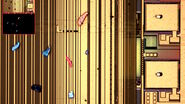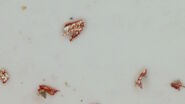High Speed for Your Material Analysis Workflow
Fast visual and chemical analysis of particulate contaminants with laser spectroscopy – explained by Dr. Konstantin Kartaschew

Particulate contaminants in pharmaceutical products, such as drugs, both liquid and solid pills/tablets, intravenous/infusion solutions, eye drops, and inhalers, can originate from many different sources. Examples are undissolved residues in solutions, packaging, seals, etc. Identifying and eliminating these contaminant particles in pharmaceutical products is crucial to ensure both product quality and patient safety.
However, finding the source of contamination by using scanning electron microscopy and energy dispersive spectroscopy (SEM/EDS) is oftentimes complex and time-consuming: it requires the sample to be transferred into a vacuum chamber and the particles of interest to be relocated. A recent 2-methods-in-1 solution, combining light microscopy and laser spectroscopy, enables the simultaneous visual and chemical analysis of particles.
What to expect in the webinar
About the webinar
Learn from our expert, Dr. Konstantin Kartaschew, how the intelligent combination of light microscopy with laser-induced breakdown spectroscopy (LIBS) will truly accelerate your root-cause-analysis workflow. You will discover how performing both visual (color and shape) and chemical (composition) analysis with your light microscope in a single work step will save you time and allow you to find the particle contamination source even faster. A demonstration performed with typical pharmaceutical samples will show you how this 2-methods-in-1 solution works in practice.
Dr. Konstantin Kartaschew explains how the DM6 M LIBS 2-methods-in-1 solution from Leica Microsystems offers advantages over SEM/EDS. For example, the true color of particles can be seen with light microscopy and the source of contamination can be quickly and efficiently determined using LIBS elemental analysis.
Key Learnings
- See how to quickly and efficiently determine the shape, size, color, and composition of your particulate contamination in a single work step.
- Understand the benefits of simultaneous visual and chemical particle analysis over conventional root-cause-analysis techniques using SEM/EDS.
- Learn all about the innovative LIBS technology and the meaning of spectral fingerprints for your highspeed particle analysis.



